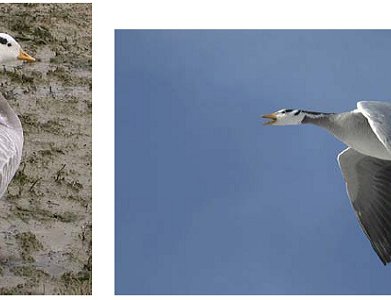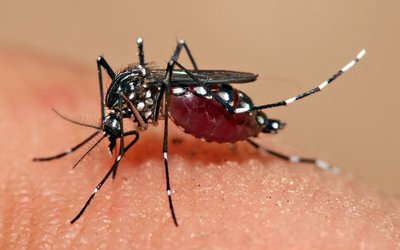
In my foolishness little did I realize that the bar-headed geese were not headed for the nearest “bhatti” ( bar) but for a trip across the Himalayas. These birds have been the focus of attention for high altitude scientists for one simple reason. How come they fly over the Himalayas with almost effortless ease with so little oxygen when humans are so completely exhausted while climbing Everest ( 8848 m)? Consider what the famous climber Reinhold Messner says as he approaches Everest, “ At a height of 8, 800m we can no longer keep on our feet while we rest. We crumple to our knees, clutching our axes—Breathing becomes such a strenuous business that we scarcely have strength left to go on”. And yet these geese merrily fly over the Himalayas in their migratory trip every year.
These birds start their journey from Siberia and fly into Central Asia to places like Mongolia and then wing their way to the Quinghai Province in China which is the northern part of the Tibetan plateau where they can be seen in large droves near high altitude lakes in that province. From here they fly south over the Himalayas and reach Rajasthan, some flying down as far as Tamil Nadu. Unfortunately recently these birds have been known to carry the deadly H5N1 Avian influenza virus especially in the high altitude lakes area in China.
What is known about their ability to fly at extreme high altitudes? Their haemoglobin which is the protein that carries oxygen is built more efficiently for oxygen carriage at very high altitudes. In addition their blood flow to the muscles is characterized by a dense network of capillaries that is conducive to better oxygen delivery to the tissues.
But of course much of their efficiency in flying over these extreme altitudes is shrouded in mystery. Besides efficient oxygen usage and energy expenditure, do they have a unique genetic advantage that explains it all? Correctly interpreting these physiological mechanisms that help these birds deal with low oxygen environments may in the long run help human beings in intensive care units who suffer from diseases like COPD ( chronic obstructive pulmonary disease) and ischemic hear disease that lead to similar hypoxic ( low oxygen) conditions. Finally, understanding their efficiency at high altitude may also give us some important clues about better ways to utilize oxygen while climbing in the high Himalayas.

Buddha Basnyat MD
Buddha Basnyat, MD, MSc, FACP, FRCP, Director of the Oxford University Clinical Research Unit-Patan Academy of Health Sciences, Kathmandu.
- Altitude Sickness
- Feb 20, 2018
- Post-earthquake Nepal: The Way Forward
- Dec 13, 2015
- The Annapurna Sanctuary
- Nov 29, 2015
- Diarrhea at the Summit
- Nov 08, 2015
- Altitude Sickness ( AMS, HAPE, HACE)
- Oct 15, 2015














